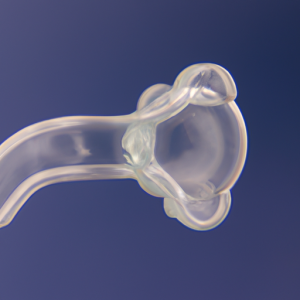Maintaining oral health is crucial for overall well-being, and one aspect of dental care that often requires attention is dental restoration. From diagnosis to treatment options, understanding the ins and outs of dental restoration is vital in ensuring a healthy and confident smile. In this article, we will delve into the various aspects of dental restoration, including the causes of dental issues, the importance of recognizing symptoms, and the different treatment options available. Whether you are seeking to address a specific dental concern or simply looking to enhance your oral health, this article will serve as a comprehensive guide to dental restoration.
1. Understanding Dental Restoration: Diagnosis, Treatment, and Causes
Dental restoration is a crucial aspect of oral health care that involves diagnosing, treating, and preventing dental issues. It plays a significant role in restoring the functionality and aesthetics of teeth affected by decay, trauma, or other problems. Understanding the various aspects of dental restoration, including diagnosis, treatment, and causes, is essential for maintaining optimal oral health.
Diagnosis is the first step in dental restoration and involves identifying the underlying issues affecting the teeth and surrounding tissues. Dentists employ various diagnostic tools, such as X-rays, clinical examinations, and tests, to assess the condition of the teeth and determine the appropriate treatment plan. Through a comprehensive evaluation, dentists can detect dental caries, gum disease, tooth fractures, or other dental problems that may require restoration.
Once diagnosed, dental restoration treatments can be tailored to meet individual needs. The treatment options vary depending on the severity and nature of the dental issue. Common dental restorations include fillings, crowns, bridges, implants, and dentures. Fillings are commonly used to repair cavities caused by dental caries, while crowns are utilized to restore extensively damaged or weakened teeth. Bridges, implants, and dentures are suitable options for replacing missing teeth, enhancing oral functionality, and improving appearance.
Several causes can lead to the need for dental restoration. The most common cause is dental caries, commonly known as cavities, which occur due to poor oral hygiene, excessive sugar consumption, or genetic predisposition. Trauma caused by accidents or injuries can also result in tooth fractures or dislodgment, requiring restorative dental procedures. Other factors, such as bruxism (teeth grinding), gum disease, aging, and certain medical conditions, can contribute to the deterioration of teeth and necessitate dental restoration.
Neglecting dental issues or delaying necessary restorative treatments can exacerbate oral health problems
2. Recognizing Symptoms of Dental Issues and the Importance of Restoration
It is crucial to recognize the symptoms of dental issues as early as possible in order to prevent further damage and maintain oral health. Ignoring these symptoms can lead to more severe problems and may require extensive dental restoration procedures.
One of the most common symptoms of dental issues is tooth pain or sensitivity. If you experience sharp or throbbing pain while eating or drinking hot or cold substances, it could indicate decay, infection, or a cracked tooth. Additionally, persistent bad breath or a bad taste in the mouth could be a sign of gum disease or tooth decay.
Another symptom to watch out for is gum inflammation or bleeding. If your gums appear red, swollen, or bleed easily during brushing or flossing, it may indicate gingivitis or periodontitis. These conditions can lead to tooth loss if left untreated.
Discoloration of teeth is another noticeable symptom. Stained or discolored teeth can be a result of poor oral hygiene, smoking, or consuming certain foods and beverages. However, discoloration can also be a sign of tooth decay or enamel erosion.
Loose or shifting teeth are clear indications of dental issues. This could be a result of gum disease or an injury. It is important to seek immediate dental attention to prevent further damage or tooth loss.
Recognizing these symptoms promptly and seeking professional dental care is crucial for the long-term health of your teeth and gums. Early intervention can often prevent the need for extensive restoration procedures and save you from unnecessary pain and expenses.
Moreover, the importance of dental restoration cannot be overstated. Dental restoration procedures, such as fillings, crowns, and root canals, aim to restore the function and appearance of damaged teeth. These treatments not only alleviate pain and discomfort but also prevent further decay or infection.
By addressing dental issues through restoration, you can effectively preserve your natural teeth. This is vital as
3. Exploring Different Treatment Options for Dental Restoration
When it comes to dental restoration, there are various treatment options available depending on the specific dental issue. Whether it is a chipped tooth, a cavity, or missing teeth, modern dentistry offers several techniques to restore your smile and oral health. In this section, we will explore some of the common treatment options for dental restoration.
1. Fillings: Dental fillings are the most common treatment for cavities caused by tooth decay. During this procedure, the dentist removes the decayed portion of the tooth and fills it with a material such as composite resin, amalgam, or porcelain. Fillings not only restore the tooth’s functionality but also prevent further decay and damage.
2. Crowns: Dental crowns are used to restore severely damaged or decayed teeth. These are tooth-shaped caps that are placed over the affected tooth to restore its shape, size, and strength. Crowns are typically made of porcelain, metal, or a combination of both. They provide protection and support to the tooth while improving its appearance.
3. Dental Implants: Dental implants are an ideal option for replacing missing teeth. This treatment involves the placement of a titanium post into the jawbone, which acts as a replacement for the tooth root. Once the post integrates with the bone, a dental crown is attached to it, providing a natural-looking and functional replacement tooth. Dental implants offer a long-lasting solution that helps maintain jawbone health and prevents further tooth loss.
4. Dentures: Dentures are removable appliances used to replace multiple missing teeth. They can be either partial dentures, which replace some missing teeth, or complete dentures, which replace all the teeth in one arch (either upper or lower) or both arches. Dentures are custom-made and provide an aesthetic and functional replacement for missing teeth, improving speech and chewing abilities.
5. Dental Bridges:

